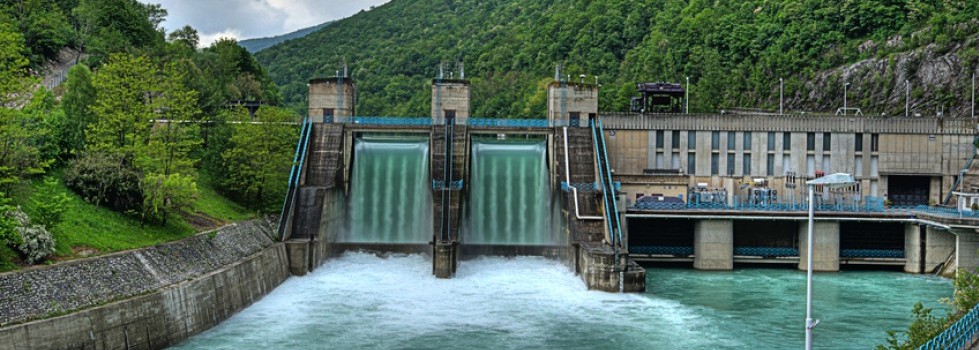Water power, or power derived from flowing water, harnessed for the operation of mechanical devices, is one of the oldest energy sources used by humans. The earliest use of water power was turning stone grinding wheels for processing grains. Waterwheels have also been used to power ships, sawmills, and irrigation. In the early 20th Century, hydroelectric power has been in widespread use, providing electric power for millions of homes and businesses sometimes thousands of miles from the power source.
Hydroelectric power uses water force to turn electrical generators. Turbines designed to make efficient use of the kinetic energy of the flowing water. Water power is a function of the water pressure head and water flow rate through turbine. Pressure head is a function of the height of a column water; dams are typically installed in deep valleys to create artificial water reservoirs to take advantage of the high pressure head in a deep dam design. Dam design also includes the use of artificial channels configured for optimum flow characteristics with minimum turbulence, maximum whetted perimeter, and minimum friction. A water reservoir allows for controlled, steady flow of water to the turbines.
The reservoir water pressure head of the Hoover Dam, one of the largest dams in the United States, is 590 feet. The Three Gorges Dam on the Yangtze River in the Hubei Province in China, has a reservoir pressure head of 264 feet. water power provides about 22 percent of all of the world’s power. Washington State is the most prolific user of water power, with six hydroelectric dams supplying 85 percent of the region’s power needs. Another use of water power is the trompe. The trompe uses the force of gravity on water falling from the top to the bottom of a chamber to compress air, which is then trapped in a second chamber , and stored for useful work.
Water Power
You are here:
- Home
- Water Power

